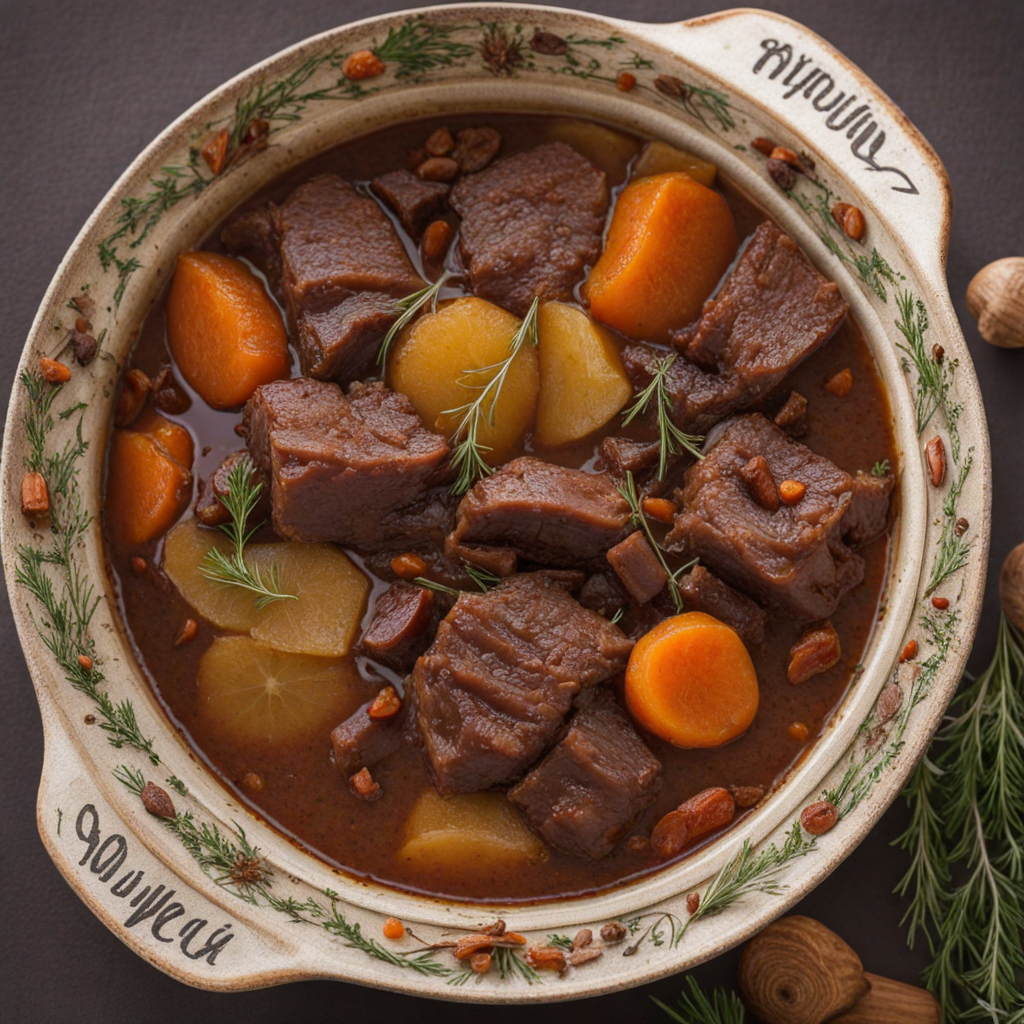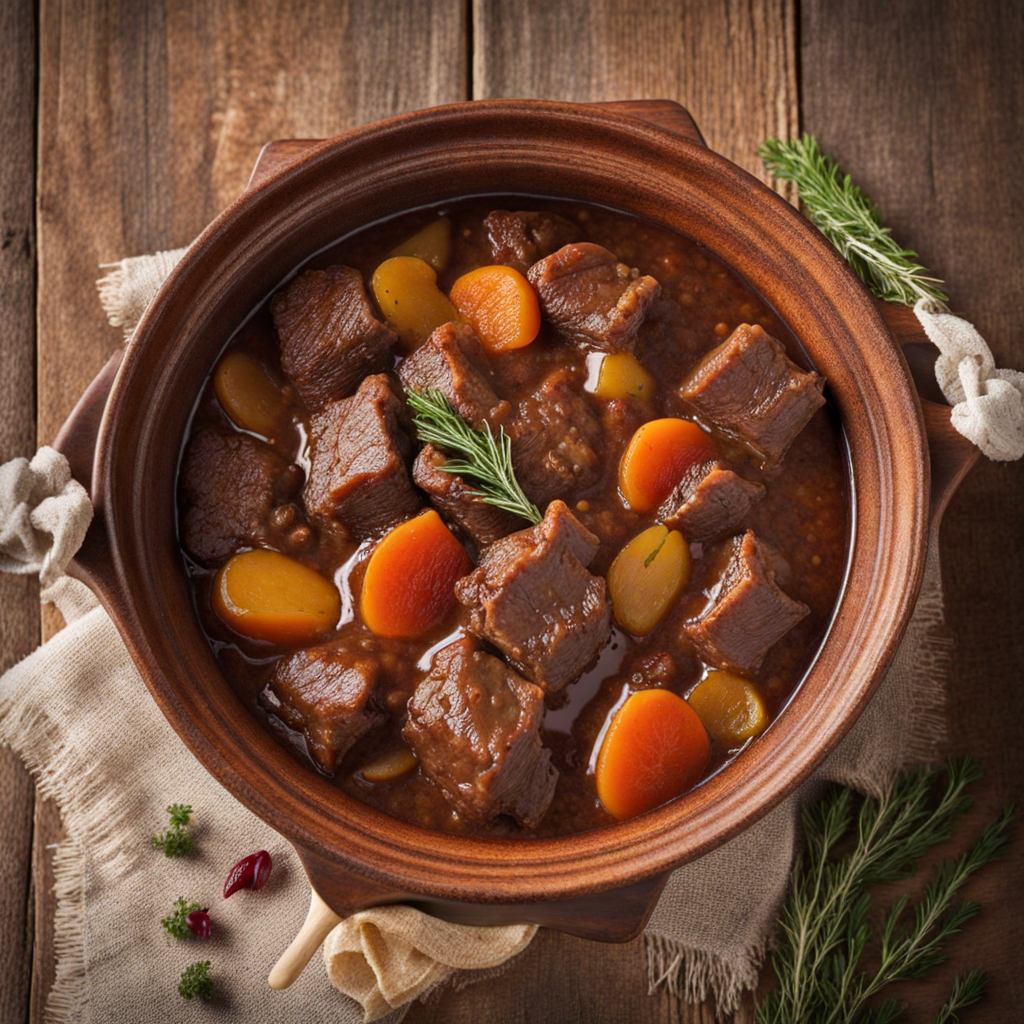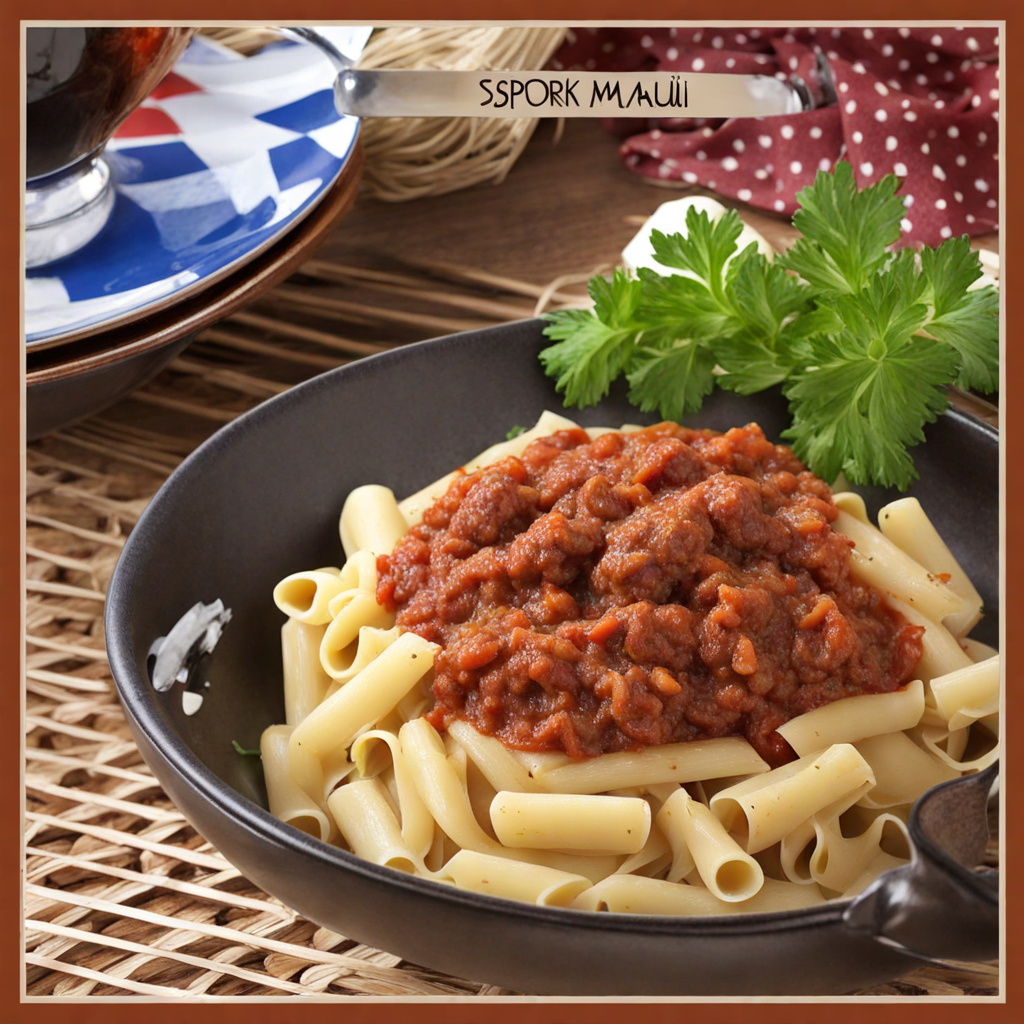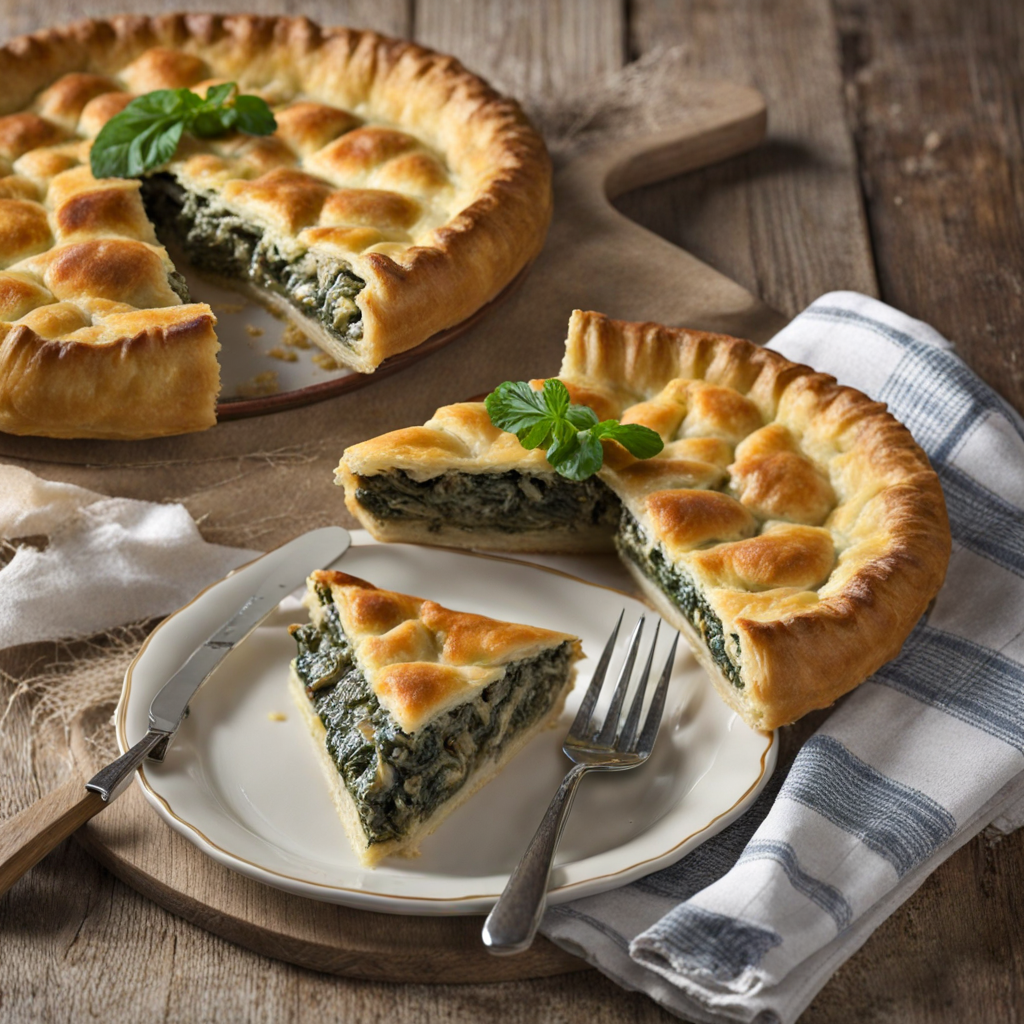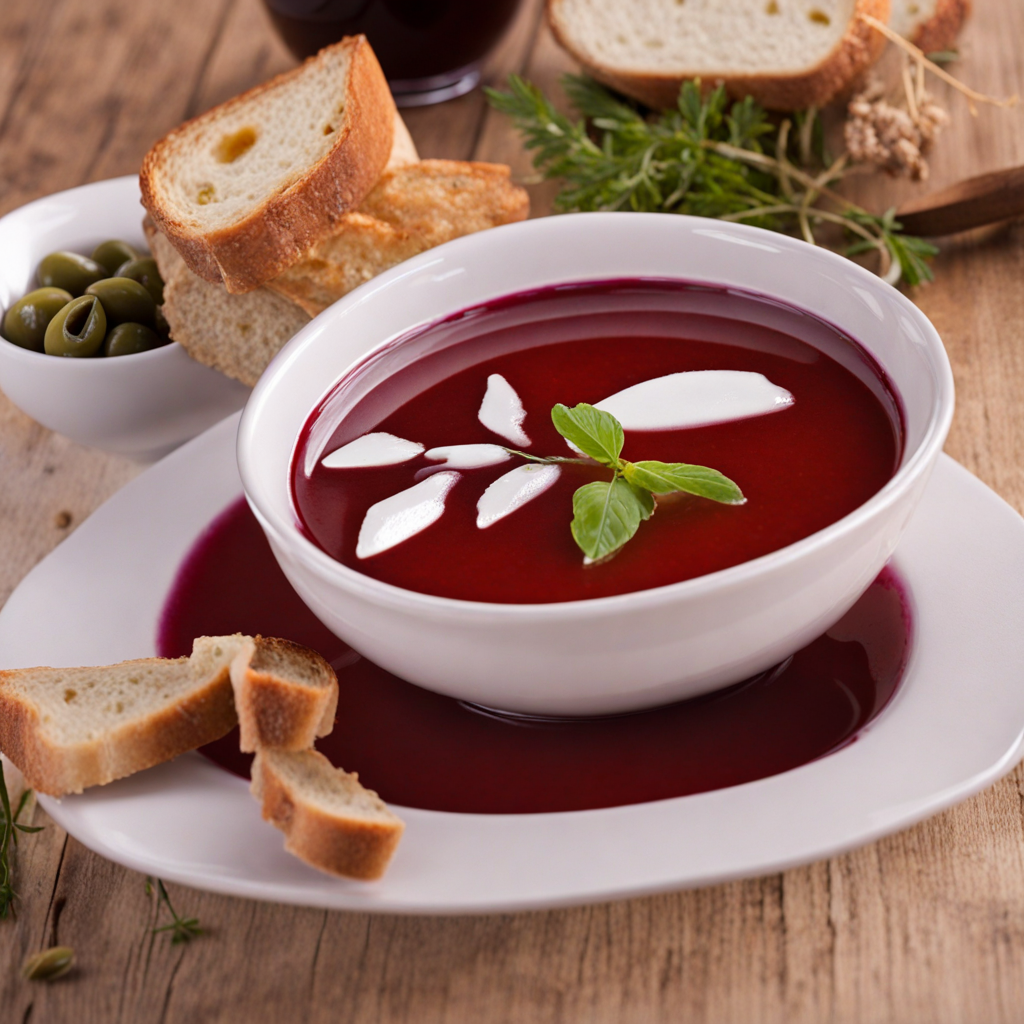Pašticada
Pašticada is a traditional Croatian dish that hails from the Dalmatian region, particularly known for its rich, savory flavors and tender meat. At its core, Pašticada consists of beef that is marinated in a blend of red wine, vinegar, and an array of aromatic spices including cloves, pepper, and bay leaves. The meat is then slow-cooked for several hours, allowing it to absorb the deep, complex flavors of the marinade while becoming incredibly tender. This dish is often accompanied by a luscious sauce made from caramelized onions, tomatoes, and dried prunes, which adds a unique sweetness that beautifully balances the savory elements. What sets Pašticada apart is not only its remarkable flavor profile but also the meticulous preparation involved. The marination process can take up to a day, ensuring that the beef is infused with the aromatic essence of the spices. As the dish cooks, it develops a deep, rich color, and the sauce thickens to a velvety consistency that envelops the meat, making every bite a delight. Traditionally served with homemade gnocchi or mashed potatoes, it provides a comforting, hearty meal that is perfect for family gatherings and special occasions. In addition to its delicious taste, Pašticada is steeped in Croatian culture and tradition, often served during festive occasions and family celebrations. The origins of this dish can be traced back to the ancient times, showcasing the culinary heritage of the region. Each family may have their own unique recipe, passed down through generations, which adds to the charm and individuality of this beloved dish. For anyone seeking to explore the flavors of Croatia, Pašticada offers an unforgettable culinary experience that beautifully captures the essence of Dalmatian cuisine.
How It Became This Dish
The Rich Tapestry of Pašticada: A Culinary Journey Through Croatia #### Origins Pašticada, a revered dish in Croatian cuisine, particularly hailing from the Dalmatian region, has a history as rich and complex as its flavor profile. The roots of this dish can be traced back to the medieval period when it was influenced by various cultural exchanges in the Mediterranean. The name "pašticada" is derived from the Italian word "pastissada," referring to a method of preparing meat, particularly beef, which is marinated and slow-cooked in a rich sauce. The origins of pašticada are often linked to the coastal towns of Split and Trogir, where Italian and Venetian influences were prevalent due to trade and political ties. As Croatia was part of the Venetian Republic for several centuries, many recipes and cooking techniques were absorbed into local cuisine, with pašticada being a prime example. The dish symbolizes not just a meal but a historical confluence of cultures, showcasing the region’s evolving gastronomic identity. #### Cultural Significance In Croatian culture, pašticada is more than just a food item; it is a centerpiece for family gatherings and celebrations. Traditionally served during holidays, weddings, and special occasions, pašticada encapsulates the spirit of Croatian hospitality. The preparation of this dish often involves the entire family, where recipes are passed down through generations, creating a sense of continuity and belonging. The dish is typically made with beef, often a cut like the round or chuck, which is marinated in vinegar, wine, and a mix of spices. The meat is then stuffed with ingredients like prunes, bacon, and carrots, and slow-cooked to tenderness in a sauce made from tomatoes, red wine, and an array of aromatic herbs. The labor-intensive process of making pašticada reflects the importance of food as a labor of love in Croatian culture. Each family adds its unique twist to the recipe, allowing for variations that reflect personal stories and regional ingredients. #### Development Over Time As Croatia underwent various political and social changes, so too did its culinary landscape, including the evolution of pašticada. In the 19th and early 20th centuries, the dish gained popularity beyond the Dalmatian coast and became well-known throughout the country. This period saw an increase in the use of more diverse ingredients due to improved trade routes and agriculture, further enriching the flavors of pašticada. The post-World War II era brought about significant changes in Croatian society, and with it, the way food was prepared and consumed. With urbanization and industrialization, traditional cooking methods began to decline, giving way to quicker, more convenient meal preparations. However, the love for traditional dishes like pašticada persisted, leading to a revival in interest in traditional Croatian cuisine in the late 20th century. The rise of culinary tourism and the farm-to-table movement encouraged chefs and home cooks alike to return to their roots, emphasizing the importance of local and seasonal ingredients. In modern times, pašticada has seen a resurgence in popularity thanks to a renewed interest in heritage cooking. Chefs began experimenting with the dish, incorporating modern techniques while staying true to its roots. The use of local wines, organic meats, and fresh vegetables has not only elevated the dish but also aligned it with contemporary culinary trends focused on sustainability and authenticity. #### Pašticada Today Today, pašticada is celebrated as a national dish of Croatia, particularly in Dalmatia, and is often featured in restaurants across the country. It has become a symbol of Croatian culinary heritage and is proudly served alongside traditional side dishes such as gnocchi, mashed potatoes, or polenta. The dish has also found international recognition, with many Croatian expatriates and chefs promoting it in culinary festivals and competitions worldwide. Moreover, pašticada's versatility allows it to be adapted to various dietary preferences. Vegetarian versions have emerged, replacing beef with hearty vegetables or plant-based proteins, showcasing the adaptability of traditional recipes to modern dietary trends. #### Conclusion In essence, pašticada is not just a dish; it is a narrative woven through the fabric of Croatian cultural identity. From its medieval origins, influenced by Italian culinary traditions, to its status as a beloved dish in contemporary Croatia, pašticada tells a story of resilience, adaptation, and community. As the world becomes increasingly interconnected, and as culinary traditions are at risk of being lost, dishes like pašticada serve as a reminder of the importance of preserving cultural heritage. Each bite of this slow-cooked, flavorful delicacy carries with it the history of generations, inviting us to savor the past while enjoying the present. In celebrating pašticada, we celebrate the rich tapestry of Croatian history, culture, and community, reminding us that food is not just sustenance but a means of connection and storytelling. Whether enjoyed in a rustic Dalmatian konoba or a modern urban eatery, pašticada remains a dish that continues to evoke nostalgia, pride, and love among those who cherish its flavors.
You may like
Discover local flavors from Croatia


